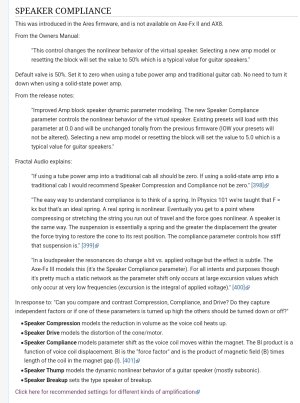Been slammed today so only just catching up to this thread....
Firstly here is a comparison with the exact same settings and a React IR rather than a Mesa Cab:
and here is Recto1 Red from yesterday:
and the real amp amp with the Mesa cab:
So, when using the React IR, the top end is much closer and kind of in the ballpark. Obviously some differences in the low end due to the load. This is kind of why I wanted to demonstrate with a cab (and why I'm very thankful Cliff posted the graph demonstrating with the cab). FWIW I compared load boxes to a Mesa cab load on a Rectifier recently, so you can hear how they affect things here too:
So we have established:
- Recto1's MV taper is 20A, the real amp is 10A (will verify what is inside my own amp)
- The Recto models have otherwise been verified by Cliff as being correct, and map very closely on a graph.
I know that the amps can be made to sound similar if I use a load with less aggressive highs (like the React IR). Ill do some examples shortly, but I have a feeling if I turn my amps MV up slightly, the top end will smooth out and it will be easy to match.
To establish how best to match the Recto model to my amp:
- it could be caused by some kind of circuit inconsistency between my amp and Cliffs. Could be condition of valves, voltages, bias, pot tolerances, values drifting, Mesa changing things, different revisions of the amp etc.
- it could be down to the Fractal model needing an even lower value setting than the real amp because of the tapers being different. For reference here is a graph showing 20A vs 10A (20A ramps up faster, 10A has more resolution at lower settings)
- the impedance curve of my particular Mesa cabs vary from the Fractal ones
- user error from me being a dumbass (there is a very large margin for error)
I'm still curious to know whether I'm able to closely match the very top end of the signal to a cab loaded amp - I know it might be an outlier use case (it requires comparing against an amp loaded by a Mesa 4x12 AND a low enough MV setting). I'm just going to test a few more things, mostly to scratch my own curiousity. Either way, I'm very happy with the Fractal model


